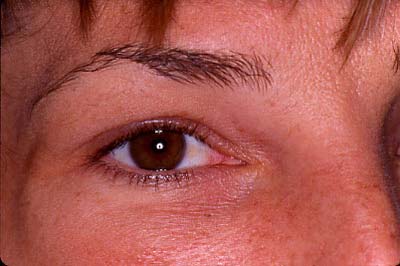Floppy eyelid syndrome (FES) found to be strongly associated with Obstructive sleep apnea (OSA)
 The condition known as floppy eyelid syndrome (FES) is strongly linked to obstructive sleep apnea (OSA), scientists in the UK have found.
The condition known as floppy eyelid syndrome (FES) is strongly linked to obstructive sleep apnea (OSA), scientists in the UK have found.
The finding implies that when doctors see FES in a patient, they should also look for OSA, and vice-versa.
The strong OSA-FES association in a case-controlled study of 102 patients tracked between 1995 and 2008, was found by study's lead author Daniel G. Ezra, MRCOphth, of Moorfields Eye Hospital, London, England, and his colleagues.
According to Dr. Ezra, the study further noted, "About one-third (32 of 102) FES patients in our study also had OSA. The significant association of the two disorders was evident even when we considered and controlled for patients'' body-mass index (BMI, an indicator of whether obesity was a factor). FES is often considered a disease of overweight, middle-aged men, but our study did not find a patient cluster based on age, gender or BMI."
People with FES have rubbery-textured upper eyelids that may easily flip up during sleep, exposing the "whites of the eyes," which can lead to dry, irritated eyes and/or discharge.
It was further suggested by the Moorfields research and other studies suggest that central nervous system arousal may be impaired in OAS suffers, so they do not wake up as people normally do when breathing slows or stops, or when the eyelid is subjected to extreme stress.
It was also found that people with OSA often preferentially sleep on one side, which could result in intense, repeated pressure on the eyelid on that side of the face.
A combination of these factors may contribute to or cause FES. The Moorfield report notes that FES resolved in an OSA patient who was treated with a continuous positive airway pressure mask. (With Inputs from Agencies)